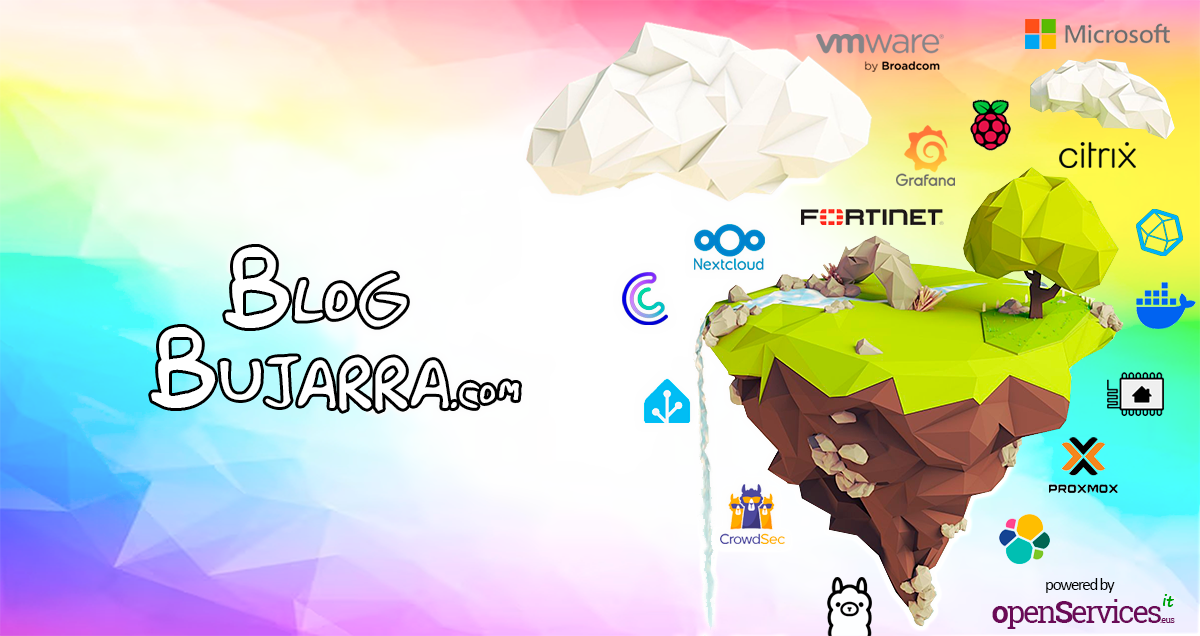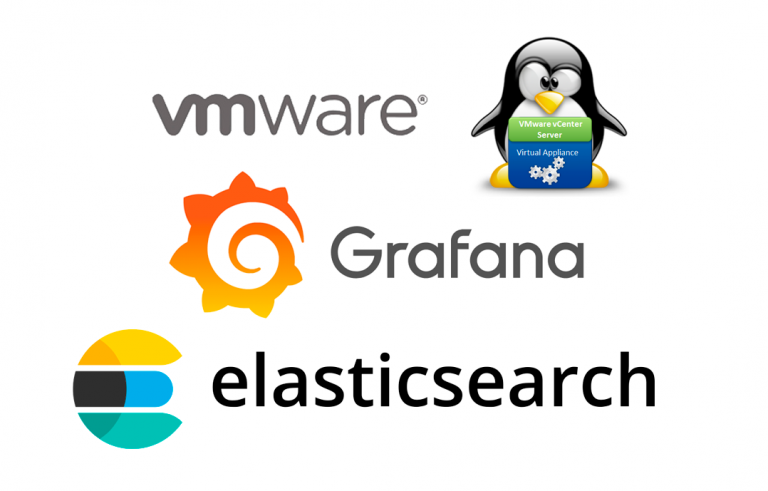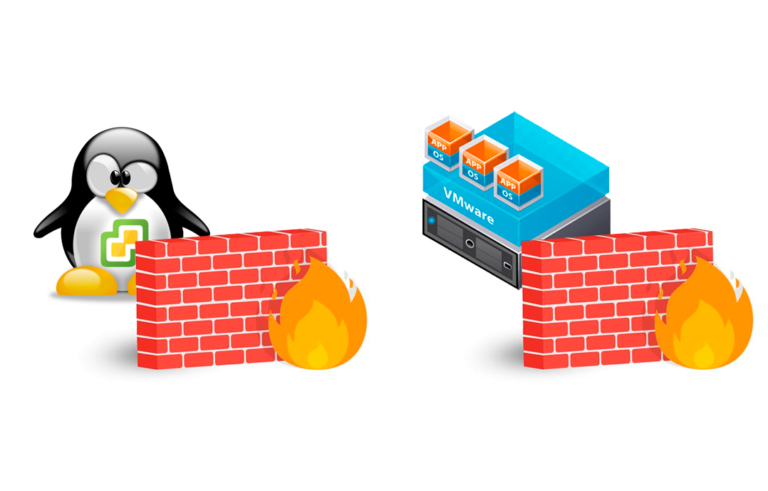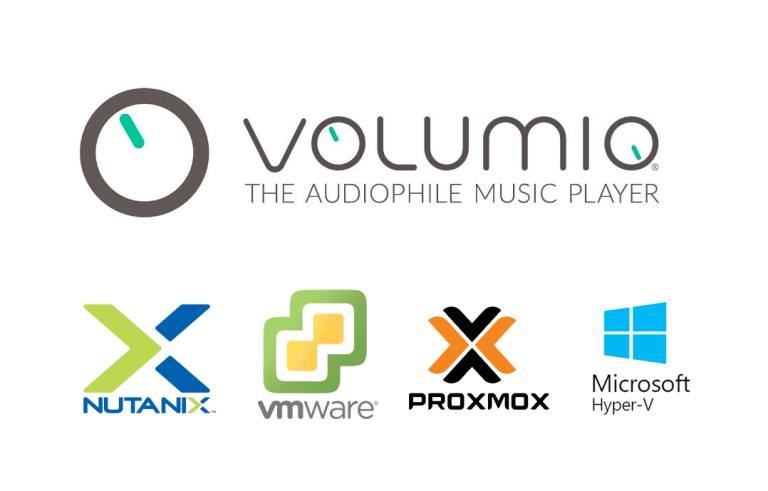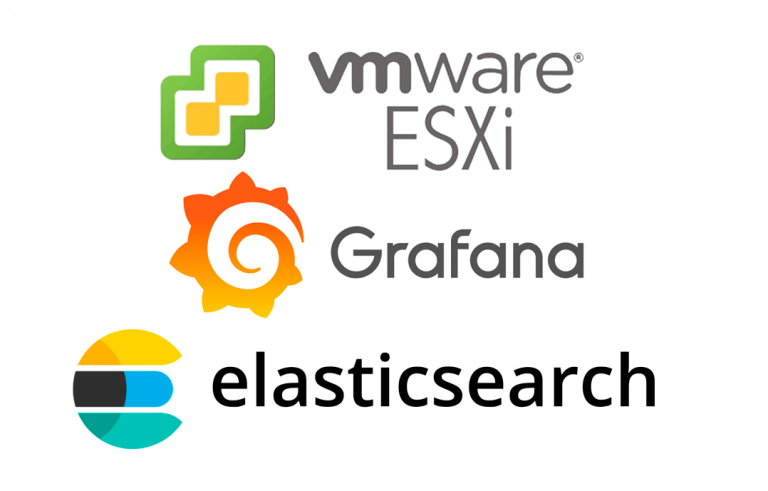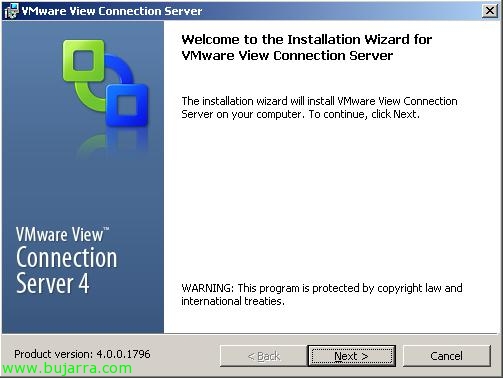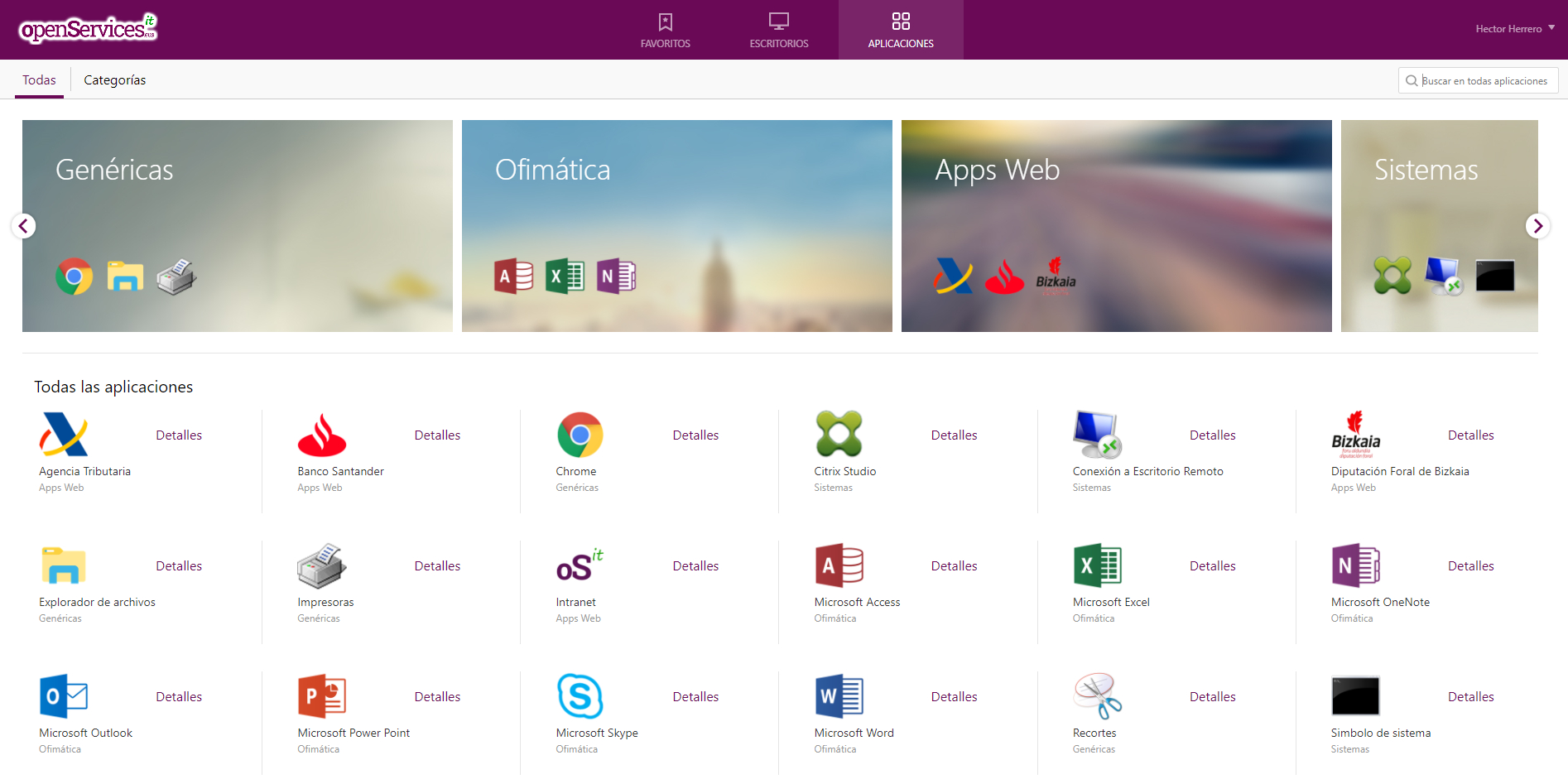
Installing and Configuring VMware View Composer 4
For me, Still the jewel of VMware View this product, Of course it is a separate license, but in large environments it is surely worth it. In this document, we'll look at how to install VMware View Composer on the new version of VMware View 4 and its configuration.
I am going to take the liberty of copying certain explanations from the previous document, as it is still the same product 😉 Good, this may be VMware View's most attractive product 4, the VMware View Composer 2, with this product, what we will achieve is to distribute Desktops to users from the same image for everyone. Without having to go around cloning a source VM, or have one full virtual machine per user, This is, the desktops we generate from this will not have a virtual hard drive, if not a 'link' to a replica of the original virtual hard drive. With this we will achieve impressive storage savings, For example, if we design that our Desktops we want them to have 20Gb of disk, You don't need to allocate that amount to each VM, if, for example, we are going to distribute 50 Desks: 50MV x 20Gb = 1TB of space for VDI or VMware View environment only, as this does not make much sense, VMware View Composer is used to deploy Desktops from a single image, these new Desktops will occupy only their swap memory plus space (optional) that we want to give users to store information, What can it be 0. A greater level of detail will be given later.
This would be the graphical schematic of how the provisioning of the Desktops works. We have a source virtual machine with its operating system installed, with your common applications for our future users installed, member of a domain, Network Configuration with DHCP, with the agent installed, etc... Once it's ready to be cloned, a snapshot is taken of it while it is turned off. We can have several snapshots of this virtual machine with different configurations for different desktop deployments.
The replica is a copy of an exact version of the source VM, This is, is a complete copy of one of the chosen snapshots (In this document there will be only one snapshot, no more will be worked with).
And from this structure, We created so many clones (Also called vClon) of this replica as we need, in the image you can see a couple of VMs generated from this version of the source VM, They are snaphost instants. Clones don't write anything to disks, if they are not isolated in their own snapshots, So the data on the 'replica' disk is untouchable and therefore all clones continue to access this disk. Apart from this, We have the possibility to create a data disk for users to store information, during the wizard it will ask us and if so,, it will map them to us with a letter on each of the Desktops.
For more detailed information you can consult this website that explains it great (yes indeed, In English): http://rodos.haywood.org/2008/12/storage-analysis-of-vmware-view.html
Installing VMware View Composer,
This is the software that will allow this to be fulfilled, to do this, we must install VMware View Composer on each of the VMware vCenter or VMware VirtualCenter servers in our organization that we want to be able to provide Desktops in an automated way.
Starting the installation of VMware View Composer 2 on the VMware vCenter server, The installation is not crumb at all, "Next",
I accept the terms in the license agreement & "Next",
Select the installation path, Default: “%ProgramFiles%VMwareVMware View Composer”, “Next”,
To install VMware View Composer, we need a SQL database, for this, During the Wizard, we will have to create a connection to it, so we first create an empty DB on our SQL server and connect to it from "ODBC DSN Setup...". Logically, before this we will have created a SQL DB on the database server and assigned a user to it.
Go to the "System DSN" tab and create a new one from "Add...",
Select "SQL Native Client" & "Finish", (If we don't have the native SQL Server client, we will take him down from the Microsoft website looking for the latest Feature Pack available for our version of SQL Server).
We give the connector a name (in my case "VMware Composer Connector to DB") and connect to our SQL Server, & "Next",
We set up authentication as we have it... "Next",
We check "Set the following database as default" and choose the database we have created for VMware View Composer, in this case "VMwareComposer", "Next",
“End”,
Click on "Test data source..." to test connectivity to the DB server.
“Accept” to everything,
Enter the name of the DSN connectors we just created and the credentials we provided during the ODBC setup. "Next",
Select the SOAP port, which by default is 18443 and if we have an SSL certificate installed on the computer we can select it, in my case, It will generate a new one for me. "Next",
Click on "Install" to immediately install View Composer,
…
After a couple of minutes, We have the app installed, ready. "Finish".
We must restart the server as soon as possible for the changes to take effect. “Yes”,
Now, we must tell VMware View that we already have the Composer, for this, we open the connection to a VMware View Connection Server, Let's go to the tab “Configuration”, to the part of “Servers” and edit the vCenter server where we have the Composer installed, since “Edit…”.
We mark the check of “Enable View Composer”, we specify the SOAP port. And we click on “Add…” to add a user with permission to add computers to Active Directory and to automatically bring desktops into the domain.
In my case I will put the administrator of my domain & “Add”,
List, Click on “OK”,
And we check that the data entered is correct since the VMware LOGO will change on the added VMware vCenter server.
